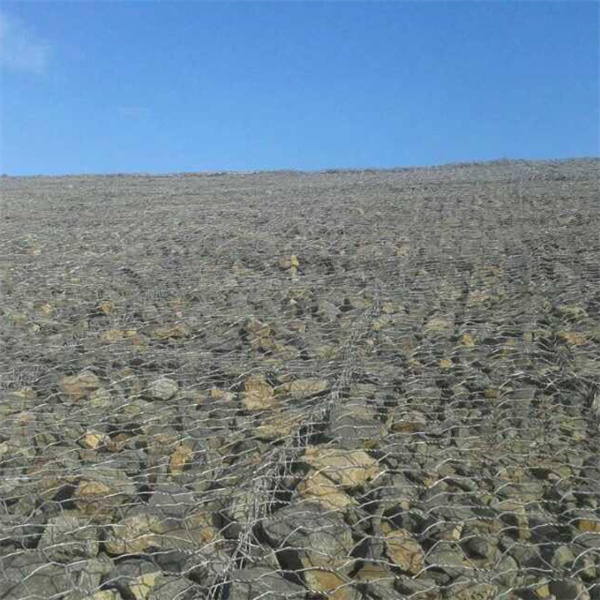Дек . 09, 2024 17:35 Back to list
Determining the Unit Weight of Gabion Walls for Construction Applications
Understanding the Unit Weight of Gabion Walls in Construction
Gabion walls have gained significant popularity in civil engineering and landscape architecture due to their aesthetic versatility and structural benefits. These walls, primarily composed of wire mesh containers filled with rocks or other materials, serve various functions, including erosion control, retaining structures, and decorative features in garden design. A critical aspect of their design and implementation is understanding their unit weight, which directly influences their stability, load-bearing capacity, and overall performance in various applications.
Definition of Unit Weight
Unit weight, often expressed in pounds per cubic foot (pcf) or kilonewtons per cubic meter (kN/m³), refers to the weight of a specific volume of material. In the context of gabion walls, the unit weight is a crucial factor as it helps engineers calculate the wall's overall stability and ability to withstand lateral pressures from soil and water.
The unit weight of gabion walls typically comprises two components the weight of the wire mesh and the weight of the fill material. The wire mesh is usually made from steel or galvanized steel, while the fill material varies from natural stone to recycled materials, depending on the project requirements and environmental considerations.
Factors Affecting the Unit Weight
Several factors influence the unit weight of gabion walls
1. Type of Fill Material Different materials have different unit weights. For instance, limestone has a unit weight of about 160 pcf, while granite can be up to 170 pcf. Using recycled materials can also alter the unit weight, potentially making it lighter or heavier depending on the material's density.
2. Mesh Specifications The thickness and type of wire used in the gabion mesh will affect the overall weight of the wall. Heavier gauge wire offers greater strength and durability; however, it also adds to the unit weight.
3. Wall Dimensions The size of the gabion units, including height, width, and length, will influence the total weight. While larger units may distribute pressure better, they also require consideration of overall mass when assessing structural integrity.
4. Environmental Factors Local climate and soil conditions can also dictate the required specifications of gabion walls, indirectly affecting unit weight. For example, in areas prone to flooding, the wall may need to be heavier to resist water pressure.
unit weight of gabion wall factory

Calculating Unit Weight
To calculate the unit weight of a gabion wall, one must first determine the individual weights of the fill material and the wire mesh. The formula is as follows
\[ \text{Unit Weight} = \frac{\text{Weight of Fill Material} + \text{Weight of Mesh}}{\text{Volume of Gabion}} \]
For instance, if a gabion is filled with 1 cubic yard of stone (weight of approximately 1,500 lbs) and the wire mesh weighs 200 lbs, the total weight would be 1,700 lbs. Therefore, the unit weight would be
\[ \text{Unit Weight} = \frac{1,700 \text{ lbs}}{1 \text{ cubic yard}} = 1,700 \text{ lbs/yd}^3 \,(\text{or } 106.4 \text{ pcf}) \]
Practical Applications
Understanding the unit weight of gabion walls is vital for their application in construction. For instance, when designing a retaining wall, engineers must ensure that the unit weight is sufficient to counteract lateral earth pressures. In landscape design, lighter gabion walls may be favored for aesthetic purposes without compromising structural integrity.
Additionally, gabion walls are often used in environmentally sensitive areas where traditional materials may not be suitable. Their unit weight allows for versatility in design, making them adaptable to various terrains and engineered solutions for erosion control and flood mitigation.
Conclusion
Gabion walls stand as a testament to the blend of functionality and adaptability in modern construction. By understanding the unit weight of these walls, architects and engineers can create designs that are not only visually appealing but also structurally sound. As sustainable practices continue to shape the future of construction, gabion walls offer a practical solution, utilizing natural materials while ensuring stability and environmental harmony.
-
The Role of Galvanized Gabion Mesh in Riverbank Protection
NewsJun.26,2025
-
The Role of Gabion Basket Raised Bed in Sustainable Gardening
NewsJun.26,2025
-
Quality Assurance of Wire Mesh Gabion Baskets
NewsJun.26,2025
-
Installation Guide for Welded Gabion Box
NewsJun.26,2025
-
How to Choose the Right Gabion Box
NewsJun.26,2025
-
Different Types of Gabion Wire Mesh
NewsJun.26,2025
-
Why PVC Coated Gabion Mattress Is the Best Solution for Long-Term Erosion Control
NewsMay.23,2025






